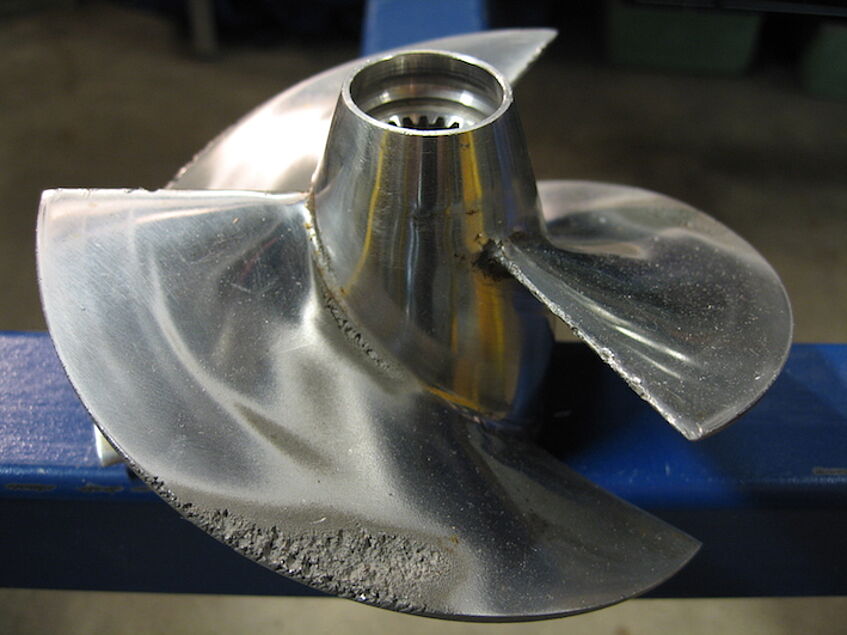Phase transitions and nucleation
We know from everyday experience that can substances can suddenly change their properties depending on external conditions such as pressure and temperature. Such a sudden change is called a phase transition. Water for instance, is liquid at ambient conditions, but when the temperature is decreased below the freezing point, water turns into ice. However, often such a phases transition does not occur immediately. For instance, water can remain liquid for long times even below zero degrees Celsius and diamonds are stable practically indefinitely even if graphite is the preferred form of carbon.
This behavior can be understood by considering how a system transforms from one phase to another. It does so by forming nucleus of the stable phase growing in the original phase, a process called nucleation. An example is a small crystal of ice forming in the undercooled liquid as shown in the figure below.
Freezing ice
![[Nucl1]](/fileadmin/_processed_/csm_ice_small_c4ae797b0f.jpg)
Freezing ice
When water is cooled below its freezing point, water molecules arrange in an open lattice structure, forming an ice nucleus (yellow sticks). This picture is taken from a computer simulation of the freezing process.
But why does this process not occur immediately? The answer lies in the fact that the interface between the two phases is unfavorable which makes the intermediate state with the nucleus less favorable than the pure original phase. As a consequence, it is “difficult” for the nucleus to grow and hence the time it takes before the transition occurs can be very long.
At conditions of practical importance critical nuclei are microscopically small such cannot be directly observed in an experiment. Since computer simulations allow us to observe such transitions with atomic resolution, they are a particularly useful tool to elucidate the mechanism of the transition under these circumstances.
Freezing gold nanocluster
Video of freezing gold nanocluster. This video was made with data obtained from a molecular dynamics simulation in which the motion of the system is followed atom by atom.
This movie shows the freezing process of an initially fluid gold nanocluster upon cooling together with a graph indicating crystallinity. Within a very short moment the gold atoms form the precursor (the so-called critical nucleus) of a completely ordered structure which then quickly grows to form a solid cluster with an icosahedral shape. Other shapes are also possible and it is an interesting question which parameters (i.e. number of atoms) favour which forms. Computer simulations like this accompanied by free energy calculations and advanced techniques such as transition path sampling allow us to extract important properties in such rare event situations, e.g. the melting temperature or the rate constant.
Cavitation (damage)

Cavitation (damage)
Propeller damaged by cavitation.
When the pressure in water drops below the vapor pressure, small vapor bubbles can form, a process known as cavitation. This collapse of vapor bubbles is a violent process during which high temperatures, pressure waves, and explosive water jets occur that frequently result in significant damage to propellers.
For instance, in engineering applications where strong water propulsion is desired, for instance at the trailing edge of an underwater propeller (see picture above) or in turbines, cavitation is an undesirable yet hardly avoidable phenomenon, in the course of which bubbles grow to a limited size and collapse afterwards. This collapse of vapor bubbles is a violent process during which high temperatures, pressure waves, and explosive water jets occur that frequently result in significant damage to propellers.
The following movie shows the formation of a bubble in water under tension. Water under tensionis a common occurrence in nature, most notably in trees that rely on pulling water from the soil up towards the leaves through narrow pores in the trunk. Under tension, water vapor is thethermodynamically favorable phase and the system undergoes the phase transition from the liquid to the vapor through nucleation of a vapor bubble. Here, water is depicted in red (oxygen) and white (hydrogen) and the yellow spheres indicate the largest bubble in the system. Over the course of the trajectory, this bubble grows until the system abruptly transitions to the vapor.
Cavitation (simulation)
Using such simulations we were able to compute the rates of bubble formation under tension which allowed us to investigate a long-standing discrepancy between different types of cavitation experiments. Furthermore, our results show that the dynamics of bubble growth are essentially determined by the viscosity of the surrounding liquid, indicating that this macroscopic principle holds even for bubbles which are only a few atom diameters in size.
Research team
Principal Investigator: Prof. Christoph Dellago
- P. Geiger
- G. Menzl
- A. Singraber
- C. Karner
- C. Cardelli
Source Material - Attribution
[Nucl1] Freezing ice © Christoph Dellago, Universität Wien
[Nucl2] Freezing gold nanocluster © Christoph Dellago, Universität Wien
[Nucl3] Propeller © Foto: Erik Axdahl, via Wikimedia Commons CC BY-SA 2.5
[Nucl4] Cavitation (movie) © Christoph Dellago, Universität Wien
